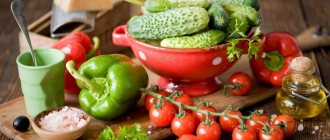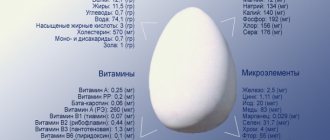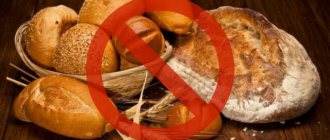Dietary nutrition is important for pathologies caused by metabolic disorders. It is necessarily included in the complex therapy of gout. This disease occurs when an unbalanced diet causes an increase in the amount of uric acid in the blood. This is the result of a disorder in purine metabolism, which is aggravated by eating foods containing purines. Therefore, for such pathology, a hypopurine diet is prescribed - a special diet that excludes the intake of purines. Thanks to this, the accumulation of urate compounds decreases, and the patient’s well-being improves.
Important information about the low purine diet

Rational nutrition is an integral part of therapy. Inflammatory processes occurring in the joints cause a person a lot of discomfort. Gout is a metabolic disorder, in which it is possible to relieve symptoms and reduce the likelihood of complications through nutritional correction. Why is it important? The body produces uric acid as a result of the exchange of purine bases. This happens in the liver. This condition is also called hyperuricemia. Symptoms of increased uric acid in the blood:
- joint pain: the hands and feet are affected first, and then the larger joints;
- hyperthermia and redness of the skin - occurs if the pathology is not treated.
- pain in the lower back, abdomen, painful urination - appear due to damage to the digestive organs and urinary system.
- frequent headaches, insomnia, hypertension, angina pectoris, heart attack caused by damage to the heart and blood vessels;
- formation of dental stones.
Pathology also occurs in children. Only in them it is expressed by skin lesions. Such children often suffer from dermatitis, diathesis and even psoriasis.
Who needs a low-purine diet? The treatment table is also prescribed for urolithiasis. This pathology can be independent or secondary, that is, it occurs against the background of gout. Both diseases are associated with impaired salt metabolism. Therefore, similar nutritional patterns are used in therapy.
The hypopurine diet is based on eliminating foods rich in purines from the diet. This is the material that fills the structure of cells. When purines are broken down, urea is formed. If there is a lot of it, it leads to the development of gout. This is why it is so important to exclude such foods from your diet.
In therapeutic dietetics there is table No. 6. This is a nutritional scheme developed by Pevzner, a general practitioner who was directly related to the creation of the first Institute of Nutrition in the USSR, and is also the founder of dietetics. Patients can take advantage of his recommendations regarding menu planning. Also, the diet can be completely prescribed by the attending physician. The advantage of the latter option is that the doctor will do this based on the characteristics of the individual patient’s body.
Purine metabolism

What is a low purine diet? Why is it the most effective for the diseases described above? To find the answer to these questions, you need to understand what purine metabolism is. It occurs in every living organism and is a complex chain of biochemical reactions that involve many enzyme systems. It takes a biochemist to fully understand them, so if you miss the complicated terms, you should know that when metabolized, purine nucleotides ultimately produce uric acid. It is excreted from the body by the kidneys and is not retained in the body.
However, as soon as disruptions in purine metabolism begin, the kidneys cannot remove the proper amount of uric acid, it begins to linger in the body, resulting in a condition called hyperuricemia. As soon as the concentration level of this acid reaches the limit, the crystallization process begins. It is the formed crystals that lead to the development of a number of diseases such as gout, urolithiasis, oxaluria and many others. It was in order to prevent such conditions that a special diet was created for urolithiasis and other diseases. Such a nutritional system helps lower the level of purines in the body.
Permitted and prohibited products
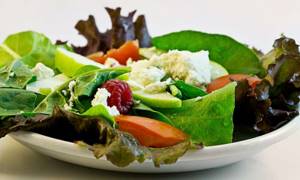
A diet involves eliminating most of your usual foods from your diet. What you can and cannot eat is listed in the table below. Purines in food can be contained in large, moderate and small quantities. The daily norm for a healthy person is 700-1000 mg. In this case, patients with gout should consume no more than 100-150 mg of such substances.
| Product type | Can | It is forbidden |
| Vegetables | Beets, carrots, cucumbers, green bell peppers, potatoes, pumpkin, tomatoes | Sorrel, cauliflower, spinach, pickled and salted vegetables, legumes |
| Meat | Up to 3 times every 7 days it is allowed to include boiled or steamed meat or lean poultry in the menu | Meat of young animals, liver, brains and kidneys, canned food, semi-finished meat products |
| Flour products | Stale wheat and rye bread, baked goods with bran, crackers | Cakes with cream, puff pastry and butter dough (occasionally possible) |
| Fish | Up to 3 times every 7 days, boiled or baked. Or steamed lean fish | Fatty types of sea and river fish, sardines, canned food and preserves, herring, smoked fish |
| Cereals | All types of cereals are allowed, but in limited quantities. | |
| Sweets, fruits | Walnuts and hazelnuts, marmalade and fruit cream, jelly, marshmallows. Fresh, dried or boiled pears, plums, grapes and apricots | Sweets with dyes, meringues, chocolate, raspberries, figs |
| Milk products | Not sharp and not salty cheese, yogurt, cottage cheese, sour cream, milk and low-fat kefir | |
| Eggs | Up to 1 pc. per day boiled or omelet | |
| Liquid dishes, spices and sauces | Secondary meat broth and soups based on it. Tomato, sour cream and milk sauces. Cinnamon. | Strong broths. |
| Beverages | Rosehip decoction, juices, unsweetened coffee and tea, mineral and plain water | Strong teas, hot chocolate, cocoa, strong coffee, carbonated drinks with dyes, alcoholic drinks |
| Salads and snacks | Vinaigrette, fresh vegetable salad, squash and eggplant caviar | |
| Fats | Butter and vegetable oil | Lard, pork, beef and cooking fats |
Juniper
A decoction of juniper berries will help with kidney pain. To prepare, you need to take a handful of juniper berries and pour half a liter of boiling water. Cover the infusion with a lid and leave for one hour. After this period of time, you need to strain the resulting infusion and drink half a glass four times a day after meals. It is worth noting that to prepare the decoction you must use purified water; after boiling, you can strain the hot water again so that the decoction does not have sediment.
These decoctions are useful for kidney diseases because they help relieve swelling, thereby alleviating the condition. Also, during kidney inflammation, you need to drink herbal decoctions that have antiseptic properties. These include peppermint, chamomile, yarrow, and nettle.
General recommendations regarding nutrition
The foods with purines listed in the table must literally be learned by heart, but this is not the only thing people suffering from gout need to know. There are a number of rules that are also recommended to be followed:
- Divide the total amount of food into several meals (fractional meals). In this case, portions should be small.
- Don't overeat. Small portioned plates will help with this, replacing regular ones.
- Eat meat and fish in small portions. You are allowed to eat up to 150 g of the first and 170 g of the second product per day.
- Severely limit salt intake. It cannot be completely abandoned, but it must be reduced to a minimum.
- Not to starve. Lack of food has a negative impact on health. Therefore, the best option is to arrange fasting days.
The role of fasting days in the hypopurine diet
They must be carried out, as this has a positive effect on the patient’s well-being. We can say that in the diet for gout and high uric acid, this is a separate point that should be observed. You cannot completely give up food even for one day. It is recommended to eat red apples and drink herbal or green tea. A salad of two types of vegetables, low-fat sour cream and cottage cheese are suitable. On fasting days, boiled rice with milk is used. You need to prepare 70 g of cereal and spread it out throughout the day. Such fasting days will have a positive impact on both health and well-being. It is recommended to carry them out once a week.
Treatment table No. 6 according to Pevzner
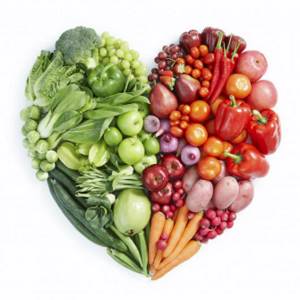
A diet developed by one of the best specialists in the field of dietetics in the USSR can significantly improve the patient’s condition. Its goal is to normalize purine metabolism and cleanse the body of harmful substances, as well as to reduce the amount of uric acid and its salts.
Treatment table No. 6 is a low-purine diet for men and women, in which BJU standards and daily caloric intake are met. Protein contains approximately 75 g, carbohydrates - 400 g, fat - 85 g. Calorie content is 2750 kcal. Includes 1500 ml liquid and 10 g salt.
A prerequisite is the initial boiling of fish and meat. Only after this can they be subjected to other heat treatment, for example, frying, stewing, baking.
Any cereal is allowed, but in moderation. You can enjoy marmalade, jam, honey and marshmallows. Vegetarian soups are prepared using recycled broth. That is, when it boils, wait 3-4 minutes, then drain the water and boil the meat a second time. It is allowed to prepare cabbage soup, potato, vegetable and soups with the addition of cereals, borscht, and beetroot soups. You can eat many vegetables, fruits, berries and dried fruits, both fresh and after heat treatment.
Various dairy products, salads, eggplant and squash caviar and vegetable sauces are also allowed on this diet. Table #6 includes potatoes, which are especially healthy and can be used to make many different dishes. It is recommended to drink more water, green tea, compotes and decoctions. Weak tea or coffee is allowed, but with milk, since these products contain the largest amount of purines.
Prohibited foods include concentrated broths based on meat, fish and mushrooms. You should not eat legumes and spinach, sorrel, smoked meats, pickles, canned food, and fish roe. Even mushrooms and offal will be harmful. You should limit your consumption of foods containing oxalic acid. What foods does it contain? In large quantities - in cocoa beans, beets, spinach, sprouted wheat, some nuts and dry cookies. In moderation - in chocolate, oatmeal, raspberries, parsley, eggplant.
Menu creation

When creating a menu for a week on a low-purine diet, you should try to diversify your diet as well as possible from foods that are on the list of permitted ones. The number of calories that the daily norm should fit into is 2 thousand. Of these, protein should account for no more than one hundred grams, and it is advisable to reduce carbohydrates to four hundred grams per day. It is recommended to eat only low-fat, healthy foods. Below is an approximate weekly menu for patients with gout, however, using such food without a doctor’s prescription is under no circumstances allowed.
Basic rules of the hypopurine diet
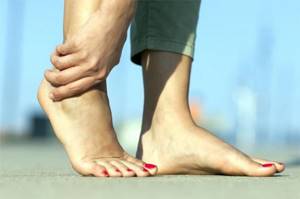
All important information has been stated above. Also, patients who create a low-purine diet on their own should know that the amount of protein consumed in the daily diet should be reduced to approximately 100 g. Less is possible, but not more. Meanwhile, protein is an important element for the construction of new cells. Therefore, it is also impossible to limit it too much.
Only low-fat foods should be included in the diet. If there is obesity, the menu is designed in such a way that the amount of carbohydrates received is as low as possible. The diet is based on low-calorie foods, which will help you gradually lose excess weight. You may need the help of a nutritionist.
You need to drink more regular water - at least 1500 ml per day. If you have diseases of the cardiovascular system, you need to discuss the norm with your doctor. Limit salt intake to approximately 10 g per day.
Do you want to be healthy and keep your body in good shape?
Join 1000+ people who receive interesting insider tips and advice on a healthy lifestyle, proper nutrition and training!
No spam, only useful and interesting content!
But even at this stage there is no need to panic: this is a very useful process, as long as there are not too many purines in the body!
At this moment, purines “forget their place” - they begin to accumulate in excess, threatening gout and other problems, instead of protecting the safety of our
vessels.
This is why it is so important to bring the process of purine metabolism back to normal with the help of a therapeutic diet - it is simply impossible to curb these “mechanisms” in any other way!
How to plan a diet correctly?

The diet is based on the list of products presented above. A low-purine diet must be balanced so that the body receives all the substances necessary for its proper functioning. If it’s difficult to create a menu on your own, you can seek help from a doctor or find ready-made options. But in general, there is nothing complicated in this issue if you know which products are prohibited and which are allowed.
You can include dishes prepared according to the following recipes in your diet:
- Carrot salad. Grate the vegetable, boil the egg and chop. Mix the ingredients, add croutons and season the salad with low-fat sour cream.
- Milk vermicelli soup. Boil 1 liter of milk in a saucepan. Break vermicelli into small pieces. Place in milk and cook for 15 minutes until tender.
- Fruit and berry salad. You should definitely include it in your low-purine diet menu. Peel the apple and pear, then cut into pieces. Turn kiwi into puree. Mix all products together, season with yogurt or sour cream. You can add a few slices of strawberries.
The hypopurine diet gives the first positive results after a short period of time, if you follow all the recommendations and follow the agreed rules. After about a week, the patient's condition improves significantly, and the symptoms soften. This has a positive effect not only on a person’s physical condition and general well-being, but also has a beneficial effect on the emotional sphere.
Below are several diet options for gout and high uric acid. They are examples of how to create your own diet. You can also use these options for your daily meals.
Kidney disease
The use of a hypopurine diet for kidney disease is also mandatory. A person’s health deteriorates, as exacerbations of gout cause discomfort and kidney problems are added to these pains. Kidney inflammation can manifest itself in various diseases. For kidney disease, table No. 6 can also be used. It is necessary to include foods from table No. 6 in the diet.
It is forbidden to eat dishes with hot seasonings and spices. Seasonings irritate the stomach and negatively affect the kidneys, impairing their function. Mushroom, fish, and meat broths should never be consumed. Legumes also have a negative effect on the kidneys. Drinks containing alcohol are strictly prohibited during illness. Dark tea, coffee, cocoa, sweet drinks, carbonated drinks, hot chocolate - all these products are prohibited for consumption. You should also not include some vegetables in your diet: radishes, garlic, radishes, onions, spinach, peppers. Under no circumstances should you eat smoked meats, caviar, salty foods, offal, fried and fatty foods, sweet muffins, and cakes. That is, everything harmful that can lead to problems in the kidneys should be excluded.
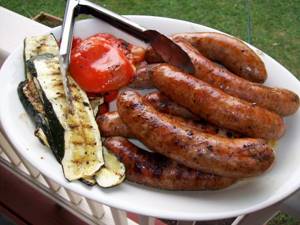
Hypopurine diet option No. 1
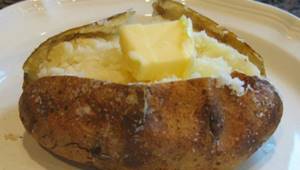
Monday:
- Breakfast - pumpkin baked in the oven, boiled egg, grain bread and tea with honey.
- Snack – carrot juice.
- Lunch – chicken noodle soup and chicken tenders.
- Snack – beetroot and carrot caviar and herbal tea.
- Dinner – boiled fish fillet and apple juice.
- Before bed - a little cottage cheese and kefir.
Tuesday:
- Breakfast - cottage cheese pudding with sour cream, chicory and oatmeal cookies.
- Snack – banana.
- Lunch – beetroot soup, oven-baked turkey meat with vegetables.
- Snack – weak tea and carrot salad.
- Dinner – oven-baked potatoes and green tea.
- Before bed – milk and blueberry jam.
Wednesday:
- Breakfast – wheat porridge, herbal tea with crackers.
- Snack – milk with biscuits.
- Lunch – vegetable soup with sour cream, boiled turkey meat.
- Snack – vegetable salad and green tea.
- Dinner – vegetable stew and fruit tea.
- Before bed – fermented baked milk.
Thursday:
- Breakfast – cottage cheese and compote.
- Snack – zucchini baked with sour cream and cucumber juice (very useful in a low-purine diet).
- Lunch – vegetarian borscht and potato balls.
- Snack – tea and pancakes with jam.
- Dinner – vegetable stew and juice.
- Before bed – berry compote.
Friday:
- Breakfast – milk noodle soup and green tea with milk.
- Snack – cottage cheese and rosehip decoction with honey.
- Lunch – milk barley soup with crackers.
- Snack – fresh vegetable salad, dressed with oil, rosehip decoction.
- Dinner – baked fish and dried fruit compote.
- Before bed - a glass of kefir.
Saturday:
- Breakfast – bread with a slice of cheese and tea.
- Snack – boiled egg and a glass of fruit juice.
- Lunch – vegetable soup, vinaigrette and stewed fish.
- Snack – jelly with crackers.
- Dinner – vegetable salad with potato bits, compote.
- Before bed – kefir with dried fruits.
Sunday:
- Breakfast - oatmeal, a slice of cheese and compote.
- Snack – bell pepper salad with tomatoes, dressed with olive oil, compote.
- Lunch – buckwheat soup and boiled fish with rice.
- Snack – tea with bread and cottage cheese.
- Dinner – fruit salad with yogurt, green tea and cookies.
- Before bed – fermented baked milk.
Since fasting days are important when following a low-purine diet for gout, it is recommended to “cleanse” one of them from a full diet.
Hypopurine diet option No. 2

It is proposed to create a weekly diet yourself from the dishes listed below.
For breakfast:
- pumpkin raisin pancakes;
- carrot casserole with fruit;
- carrot curd;
- buckwheat porridge;
- weak teas and coffee;
- millet porridge with apples;
- toast with butter or cheese.
For lunch:
- potato and carrot bits;
- vegetable stew;
- cabbage soup with rye crackers;
- braised cabbage;
- beef cutlets;
- rice porrige;
- carrot or zucchini soup;
- potato and cabbage salad;
- tomato and grant juice;
- potato and fish pie;
- milk noodle soup.
For dinner:
- vegetable cabbage rolls;
- corn porridge with yogurt;
- salad with egg, carrots and croutons;
- oatmeal with applesauce;
- lingonberry broth, yogurt, milk or jelly;
- beet salad;
- pasta casserole;
- pancakes with strawberries;
- peppers stuffed with rice;
- pumpkin pudding;
- a fresh vegetable salad.
For a snack:
- curd soufflé;
- blueberry-apricot jelly;
- blackberry and banana smoothie;
- cereal with milk;
- blueberry yogurt pie;
- fruit salad;
- cereal yogurt;
- melon;
- peach with curdled milk;
- strawberries and cream;
- carrot juice.
It is important not to forget that portions should be small.
Hypopurine diet option No. 3
This is the treatment table No. 6 proposed by Pevzner. The diet is bland, the menu is quite varied. Another option:
- Breakfast: vinaigrette with sour cream, a slice of bread with butter, cottage cheese, tea.
- Snack: scrambled eggs, buckwheat, juice.
- Lunch: soup with vegetables with sour cream, meat fried in croutons, fried potatoes with sauerkraut.
- Snack: compote.
- Dinner: vegetable cutlets, pasta casserole, jelly.
- Snack: a bun with a glass of milk.
Creating a menu will not be difficult even for a person far from medicine and nutrition. The main thing is to remember the list of foods that you can eat and purine-containing foods that are prohibited.
